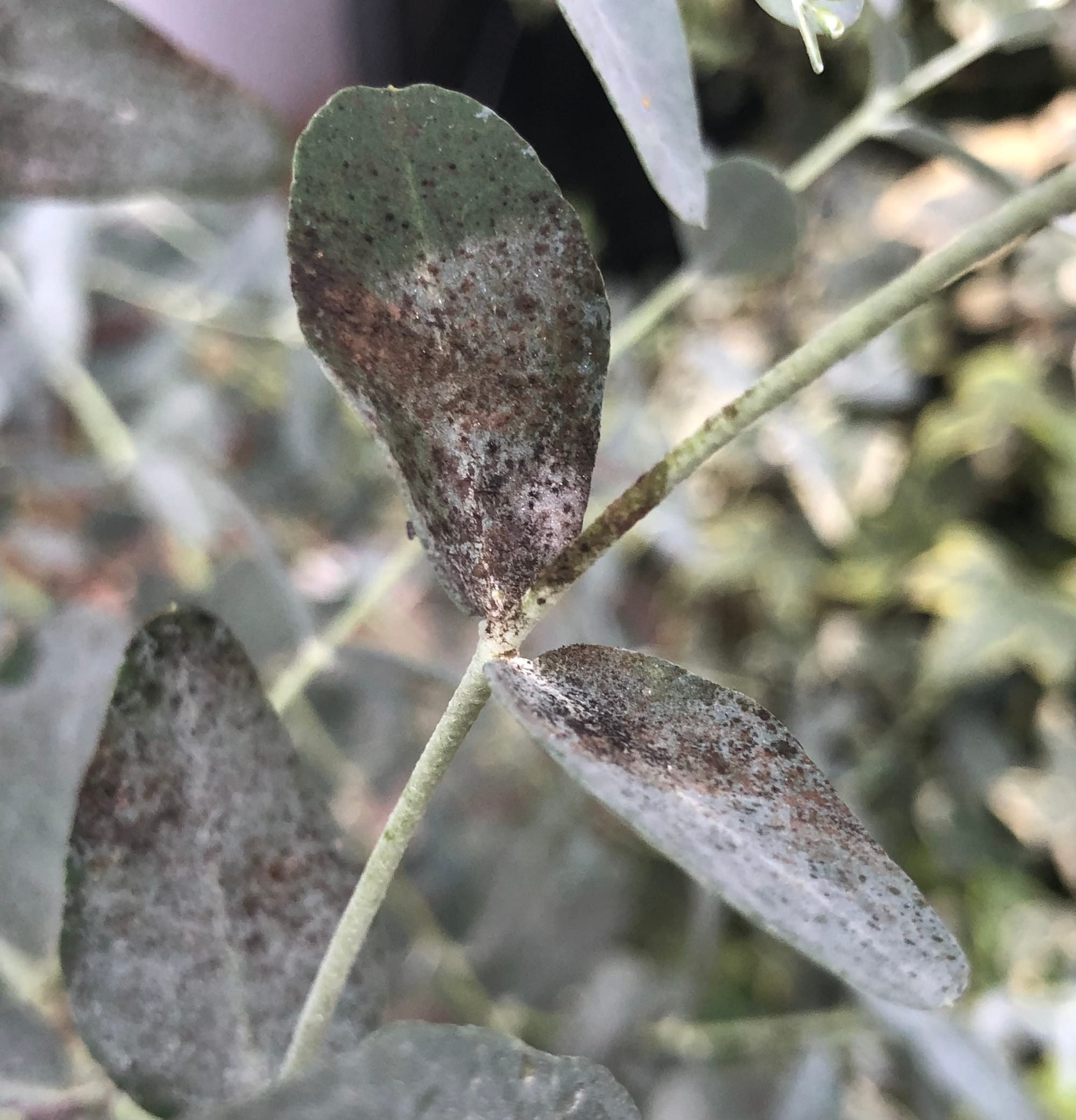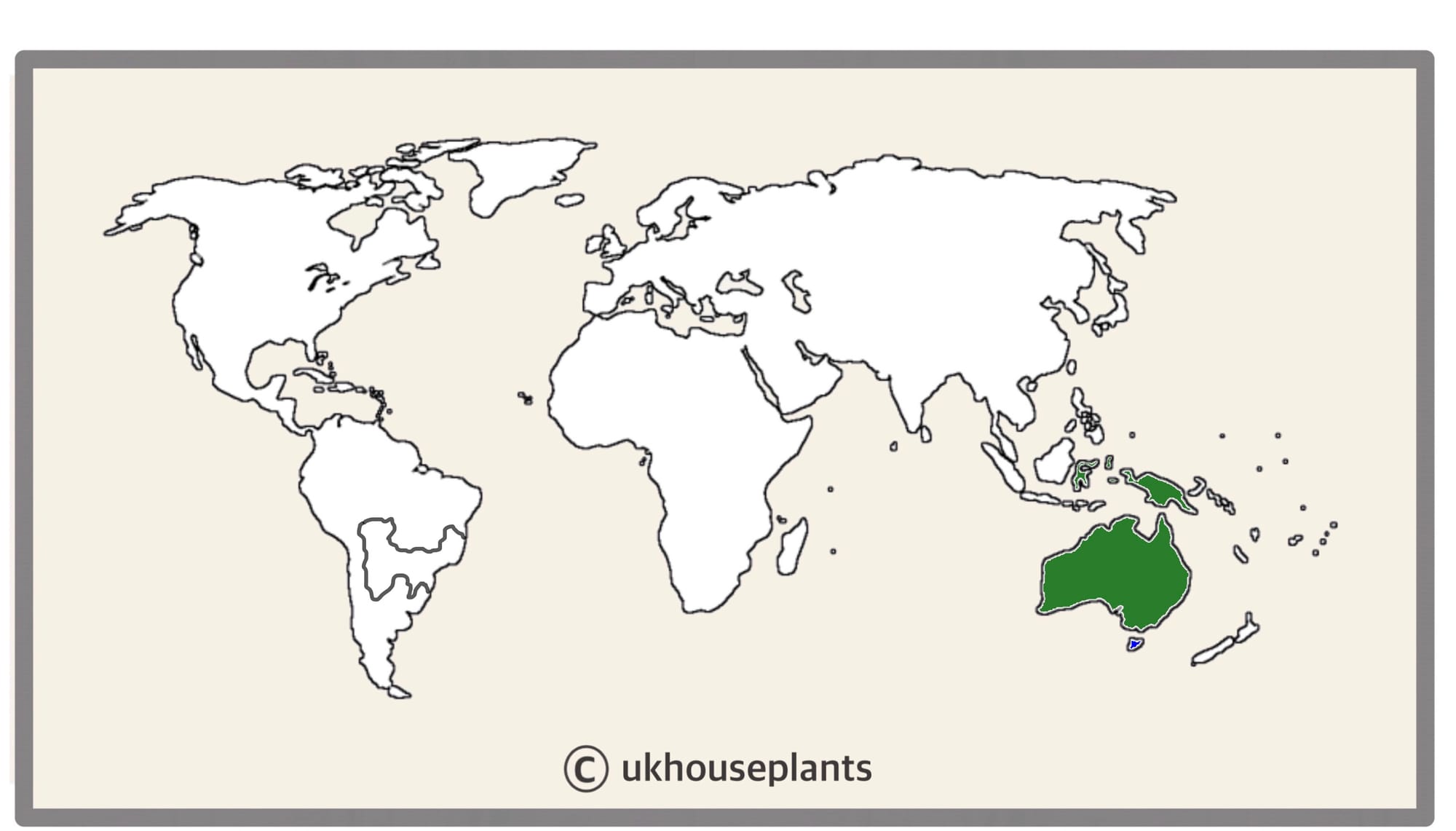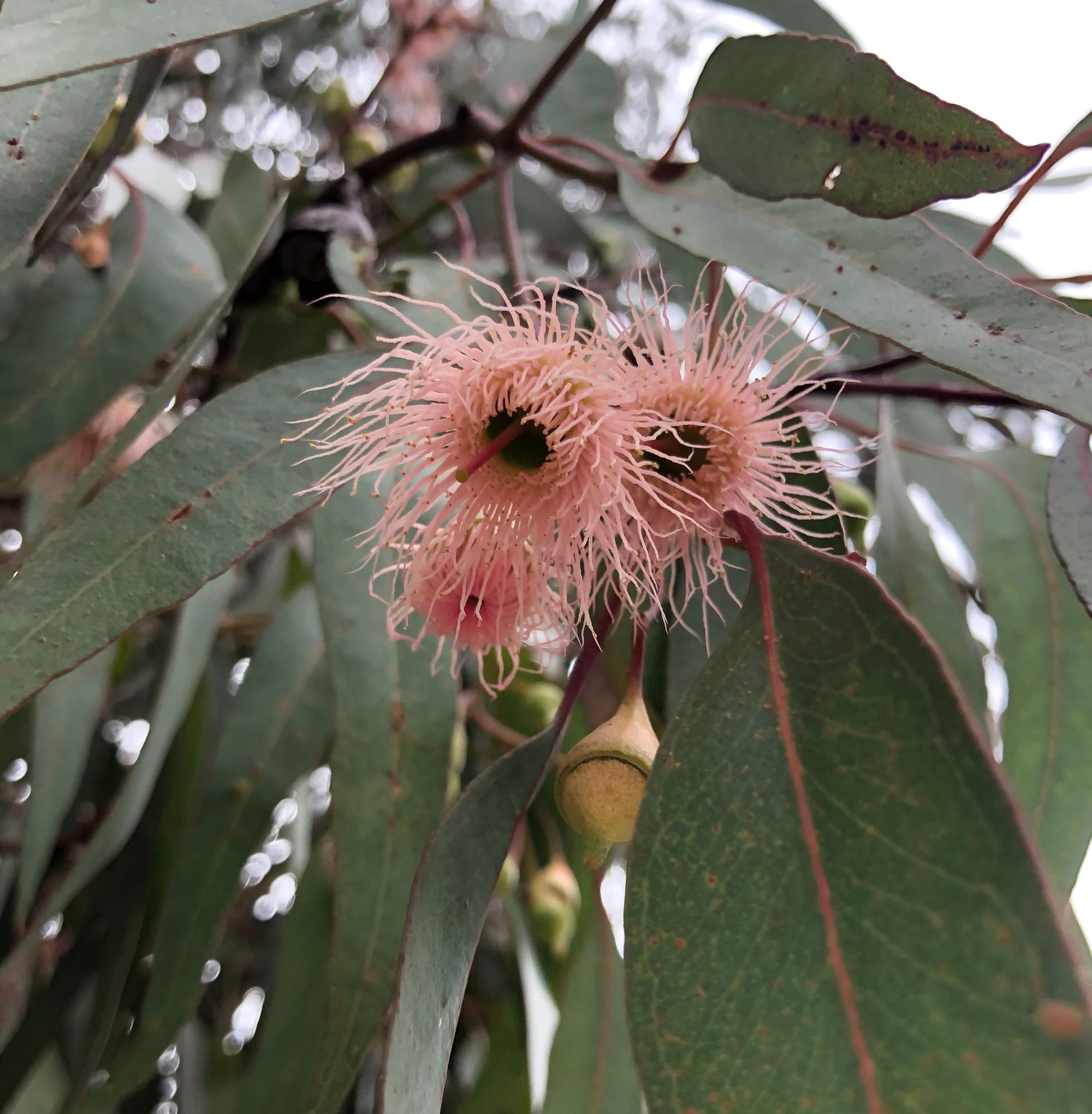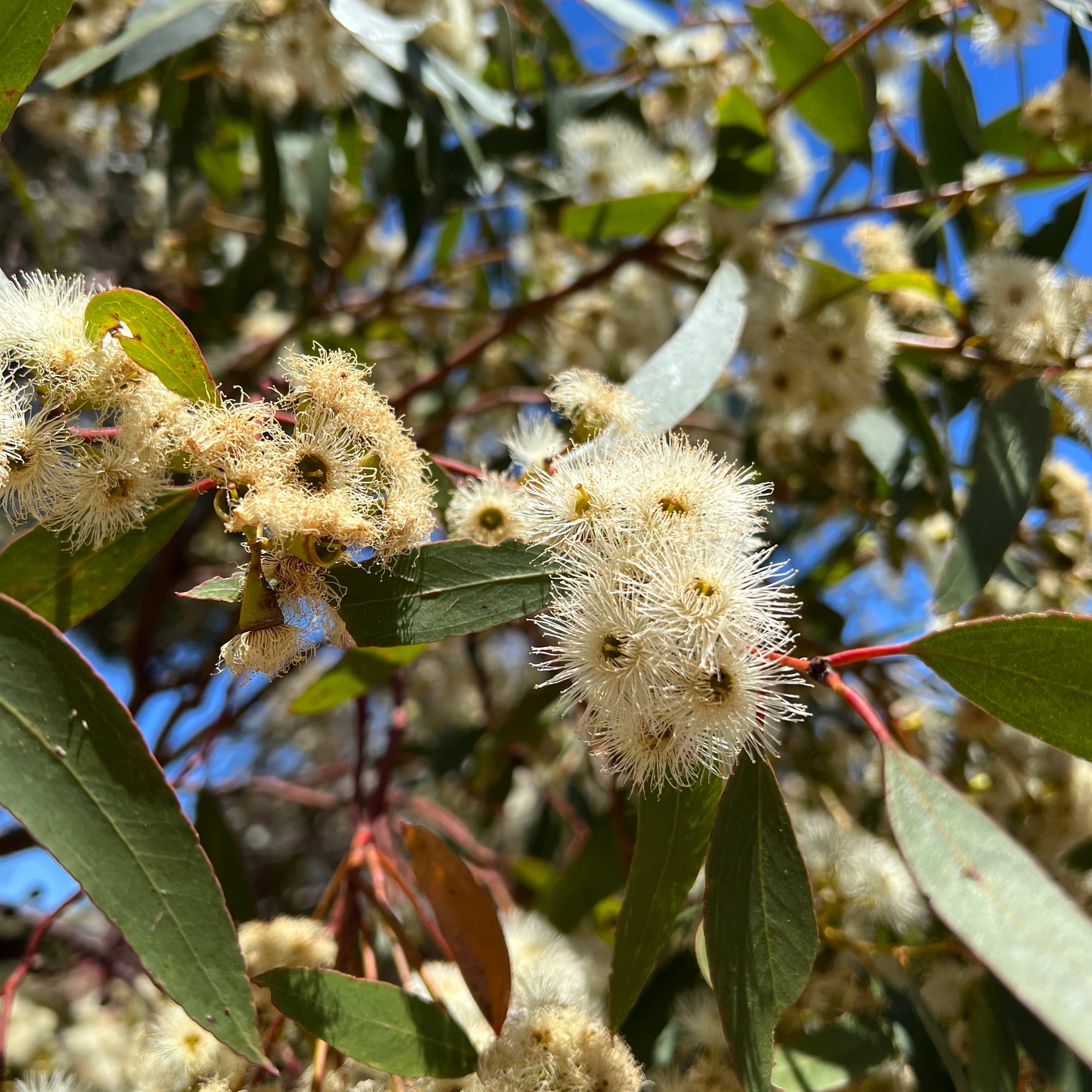
Eucalyptus gunnii subsp. divaricata
Contents
- Top Tips
- Location, Water, Humidity & Fertilisation
- Common Issues
- Origins, Temperature, Propagation, Repotting & Toxicity.
Need the answer to a specific plant query? Book a 1-to-1 video call with Joe Bagley, the website's friendly author, to overcome and address your niggling problem! Available on iMessage, WhatsApp, Facebook Messenger & more.
Top Tips & Info
- Care Difficulty - Moderate (Easier Outdoors)
- Indoor Eucalyptus like to be situated in a location that offers bright light with the possibility of morning sunlight.
- Allow the top third of the soil to dry out in between waters, reducing this further during the winter. It's important not to under-water your specimen due to the poor ability to tolerate droughts.
- Fertilise using a 'Houseplant' labelled feed every four waters in the spring and summer, reducing this to every six in the colder months.
- Repot every two to three years using a 'Cactus & Succulent' labelled compost and the next sized pot with drainage.
- Keep an eye out for Mealybugs and Scale that’ll sit in the cubbyholes of the plant.
Location & Light - 🔸🔸🔸🔸
A position that offers a splash of morning or evening sun is best, especially during the autumn and winter months. Avoid more than two hours of direct sunlight a day during the summer, as this will lead to dehydration and sun-scorch. Rapid leaf loss will occur to plants that are placed in too dark locations - if it's difficult to read a book, it'll be too dark for the plant, too!
We'd recommend placing your Eucalyptus on either a north, north-east or north-west facing windowsill, or within two metres of a south-facing window. It can also spend the summer months outdoors in a sheltered location. This will improve its overall health by spending time in the fresh outdoors; as long as you bring it in before the night temperature dip below 10℃ (50℉), no harm will be risked.
Water - 🔸🔸
During the spring and summer, maintain good soil moisture by only allowing the top third to dry out in between irrigations - reduce this further during the colder months for the replication of its dormancy period. Those situated in darker locations must be watered far less than those located in brighter ones for the prevention of root rot. Under-watering symptoms include stunted growth, dry spots appearing on the leaves and yellowing older leaves; these issues are either down to an over-crowded pot, too little light, or forgetfulness. Over-watering symptoms include yellowing lower leaves, brown mushy patches developing in the stems, and root rot. For the latter, take the plant out of its pot and investigate the health below the soil line. If there are visible signs of rot, click on this link to learn about the recommended steps to eradicate this problem.
Humidity - 🔸
Low humidity won't affect a Eucalyptus too much, as long as you occasionally mist the foliage whilst the radiators are operating. A gentle hose-down once a month will help with the hydration of leaves, but will also wash off any excess dust and pests.
Fertilisation - 🔸🔸
Fertilise every four waters during the growing period before reducing this to every six in the autumn & winter. Although an 'All-Purpose' fertiliser will still do the job, we'd recommend using a specific 'Houseplant' labelled fertiliser as it'll support the vital thirteen nutrients that this species will need to grow.
Common Issues with Indoor Eucalyptus
If you still can't find the answer to your specific houseplant problem, book a 1-to-1 video call with Joe Bagley to point you in the right direction today.
Curled leaves and dried brown edges are the result of too little water and over-exposure to the sun. Although Indoor Eucalyptus can naturally do well in sun-filled locations, those that haven't acclimatised to the harsh rays will show signs of sun-scorch and environmental shock. Prolonged exposure will significantly speed the process of dehydration, so consider transplantation into a bigger pot in the spring to wrap the roots around moister soil.
Continual lower leaf loss is a significant issue among gardeners. This unfortunate phenomenon is caused by dark locations and will continue to occur until it is relocated. Introduce the plant to a more well-lit location with a splash of off-peak sunlight; if caught in time, the leaf loss should stop within a few days.
Environmental Shock is a familiar occurrence with newly-located specimens, that usually results in stunted growth and lower leaf loss (common). When a plant is relocated into a new, unfamiliar setting, the effects can be catastrophic. The humidity, temperature and light levels will all suddenly shift into different proportions, inflicting great stress the individual. There are two options of addressing this issue; either wait it out or relocate it into a more Eucalyptus-friendly environment. As long as the specimen appears healthy with little change to its pre-existing leaves, new nodular growth should emerge in the following months.
 Although pests are rare with Indoor Eucalyptus plants, 'Scale' or 'Aphids' will produce a sticky residue called honeydew that may become covered in a black sooty mould (above). We recommend wiping the foliage with a damp cloth of warm water and dishwashing detergent and pruning the pest-affected leaves.
Although pests are rare with Indoor Eucalyptus plants, 'Scale' or 'Aphids' will produce a sticky residue called honeydew that may become covered in a black sooty mould (above). We recommend wiping the foliage with a damp cloth of warm water and dishwashing detergent and pruning the pest-affected leaves.
Yellowing lower leaves (closest to soil) could be a sign of over-watering, but equally is a byproduct of maturity. If the older leaves rapidly become yellow in quick succession, over-watering could be to blame. People don't realise that a plant's root system needs access to oxygen too; when soil is watered, the air will travel upwards and out of the potting mix. A lack of accessible oxygen for the roots will cause them to subsequently breakdown over the oncoming days. Click on this link to learn more about root rot and how to address it.
Always use lukewarm water, and if you choose to use tap water, allow it to stand for at least 24hrs before application. Their root systems tend to be quite sensitive to temperature change, so pouring cold tap water into the pot will not only ironise the roots, but could even cause yellowed halos around each leaf.
Transplant shock is a big issue when it comes to repotting; give the plant a good soak 24hrs before the action and never tinker with the roots, unless it has been affected by root rot. Typical signs of transplant shock are largely similar to under-watering (wilting, yellowing leaves and crisped growth). For more information about addressing this issue, click on this link and scroll down to the 'Transplant Shock' section!
Origins
In 1789, Charles Louis L'Héritier documented Eucaptyus in his taxonomic book, Sertum Anglicum. The genus' name comes from the Ancient Greek words of eu and kalypto, that translates to 'beautiful' & 'conceal', referring to the operculum covering the developing flower buds. The most popular indoor species, E. gunnii, was first documented by Joseph Dalton Hooker in 1844, honouring South African botanist, Ronald Campbell Gunn.
 The Distribution of Eucalyptus in Green & E. gunnii in Blue.
The Distribution of Eucalyptus in Green & E. gunnii in Blue.
Temperature
10° - 23℃ (54° - 75℉)
H1b (Hardiness Zone 12) - Can be grown outdoors during the summer in a sheltered location with temperatures above 10℃ (50℉), but is fine to remain indoors, too. If you decide to bring this houseplant outdoors, don't allow it to endure more than an hour of direct sunlight a day as it may result in sun-scorch. Regularly keep an eye out for pests, especially when re-introducing it back indoors.
Spread
Up to 4m in height and 1m in width. The ultimate height will take between 5 - 10 years to achieve, with 20cm of growth being put out annually.
Pruning & Maintenance
Remove yellowed or dying leaves and plant debris to encourage better growth and improve the all-round appearance. Pruning must be done with clean scissors or shears to reduce the chance of bacterial and fungal diseases; remember to make clean incisions as too much damage can shock the plant.
Propagation
Via Seed or Stem Cuttings.
Stem Cuttings (Difficult)
- Hygiene is the most crucial element of successful propagation. The secateurs must be dirt-free with a fresh (or well stored) batch of compost. As you'll be cutting through vulnerable tissue, using uncleanly equipment will introduce harmful pathogens to the cutting and its mother plant.
- For stem cuttings, the best specimens are those located at the leading growths. You should aim for a semi-wooded base, but still juvenile enough to slightly bend with the diameter of a pencil. Never use diseased or weakened growth, as it is likely to fail.
- Make the best incision possible to prevent the development of disease and remove the bottom half of the leaves.
- Use an aerated soil that has a fluffy texture with some perlite, too. Never use a poorly stored bag of compost as it'll promote larvae or perennial seeds to arise. ukhouseplants would recommend using 'Houseplant Compost' with a 7cm (3 inches) pot that has adequate drainage holes.
- Place a 2cm (0.8 inches) layer of soil at the bottom of the pot, and then rest the cutting vertically in the middle - you may have to hold it for support.
- Fill the compost around the cutting, making sure that its bottom half is submerged. Do NOT press or compact the soil. Condensing it to support the cutting will push the oxygen above the soil line, suffocating the roots until they rot. If it needs support, introduce a cane or something that won't lead to compaction!
- Place the potted cutting in a transparent bag or box. Because of the lack of roots, it'll start to lose stored water - very quickly. A confided environment will lock-in the humidity and reduce the rate of transpiration (water loss through the leaves).
- You'll rarely have to water the soil due to the moist air. If it compacts itself after the first irrigation, level it out by adding more compost.
- Open the bag every few days for fresh air, but be sure to keep the soil evenly moist and NOT soggy - if it looks saturated, leave it! The surrounding humidity in the container will do its job by hydrating the leaves and its stem.
- Situate it in a bright, indirect location away from any heat sources (i.e. radiators). Keep the temperature around 18℃ (64℉) as this is the optimum temperature for root development - you can even use a bottom-heat pad to speed-up the process. The roots will develop BEFORE the foliage. You can safely remove the bag or box once new leaves emerge, as, at this point, there'll be a sufficient root system. Introduce a pebble tray to maintain a good level of atmospheric saturation and to reduce the severity of environmental shock
- Keep the soil moist and maintain a bright, indirect location away from direct sunlight and other heat sources. After around six months, transplant into a slightly bigger pot, keeping in mind transplant shock (where the root hairs are damaged or over-touched). For more information on how to perform the perfect transplant, click here!
Flowers
Pink jellyfish-like flowers will appear during the months of late summer, developing across the foliage line to attract airborne pollinators. Unfortunately, it's doubtful for a specimen to flower in domestic settings due to the unfavourable growing conditions of low light, poor dormancy periods & restricted roots.
 As a whole, the Eucalyptus genus has many different flower structures & colours. Here's the inflorescence of an Eucalyptus obliqua.
As a whole, the Eucalyptus genus has many different flower structures & colours. Here's the inflorescence of an Eucalyptus obliqua.
 Eucalyptus planchoniana
Eucalyptus planchoniana
Repotting
Repot every two to three years in the spring, using a 'Cactus & Succulent' labelled potting mix and the next sized pot with adequate drainage. Hydrate the plant 24hrs before tinkering with the roots to prevent the risk of transplant shock. For those situated in a darker location, introduce an extra amount of perlite and grit into the deeper portion of the pot to downplay over-watering risks. Click here for a detailed step-by-step guide on transplantation, or via this link to learn about repotting with root rot.
Book a 1-to-1 video call with Joe Bagley if you'd like a personal guide to repotting your houseplant. This will include recommending the right branded-compost and pot size, followed by a live video call whilst you transplant the specimen for step-by-step guidance and answer any further questions!
Pests & Diseases
Keep an eye out for scale (most common), aphids, vine weevils & mealybugs. Typical diseases associated with Eucalyptus are leaf-spot disease, botrytis & root rot - click here to learn about these issues.
Toxicity
This plant is classified as poisonous, so if small sections are eaten, vomiting, nausea and a loss of appetite may occur. Consumption of large quantities must be dealt with quickly; acquire medical assistance for further information.
Retail Locations
Online Stores.
Book a 1-to-1 Call with Joe Bagley
If you need further advice with your houseplants, book an advice call with ukhouseplants' friendly and expert writer today! This can be done via a video or audio call on most apps, including Facebook, FaceTime & Skype. A ten-minute call costs £5.99 (US$7), or £15.99 for thirty minutes. You can ask multiple questions, including queries on plants, pests, terrariums, repotting advice and anything in between. Please consider supporting this service to keep ukhouseplants thriving!